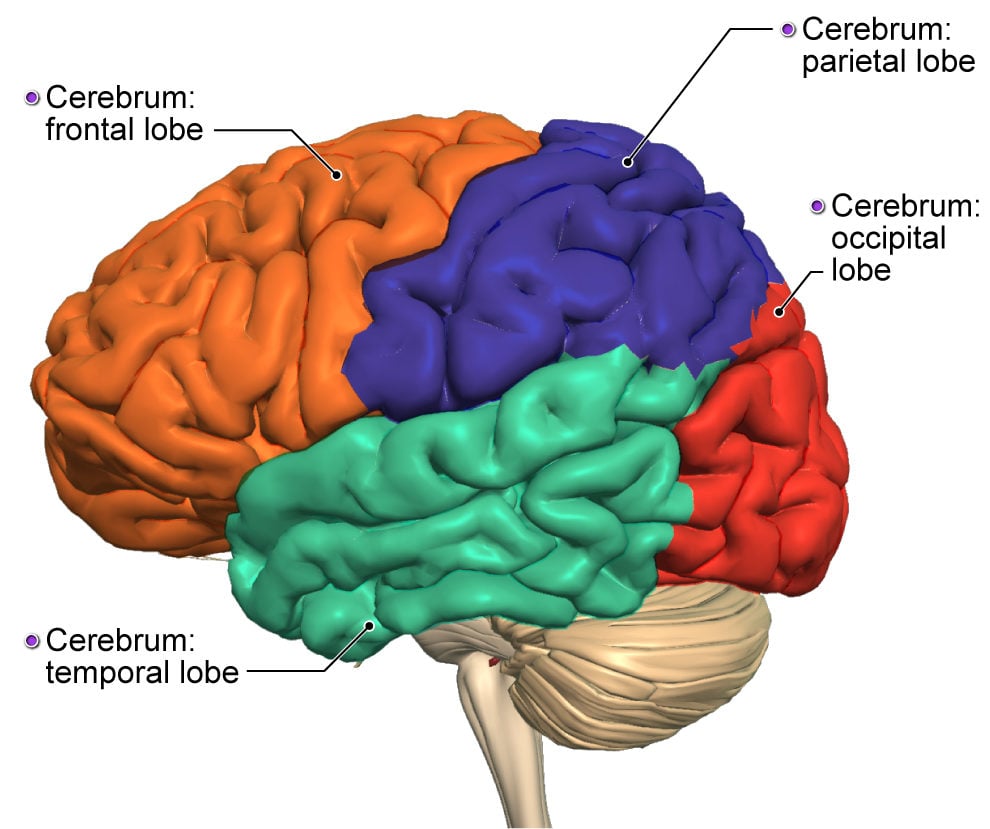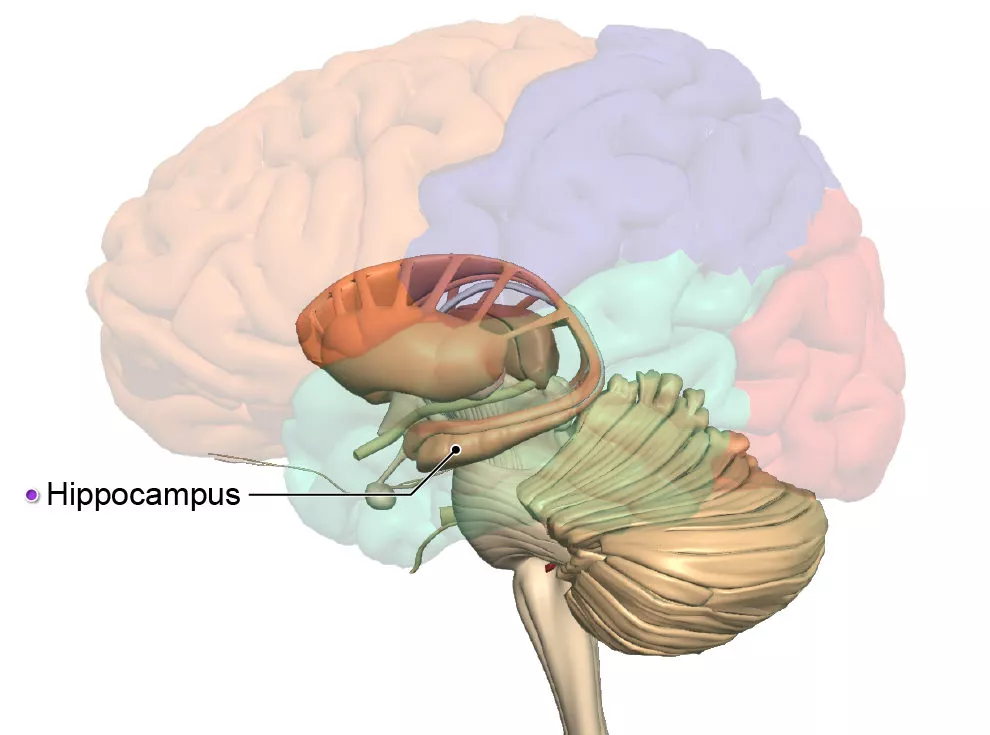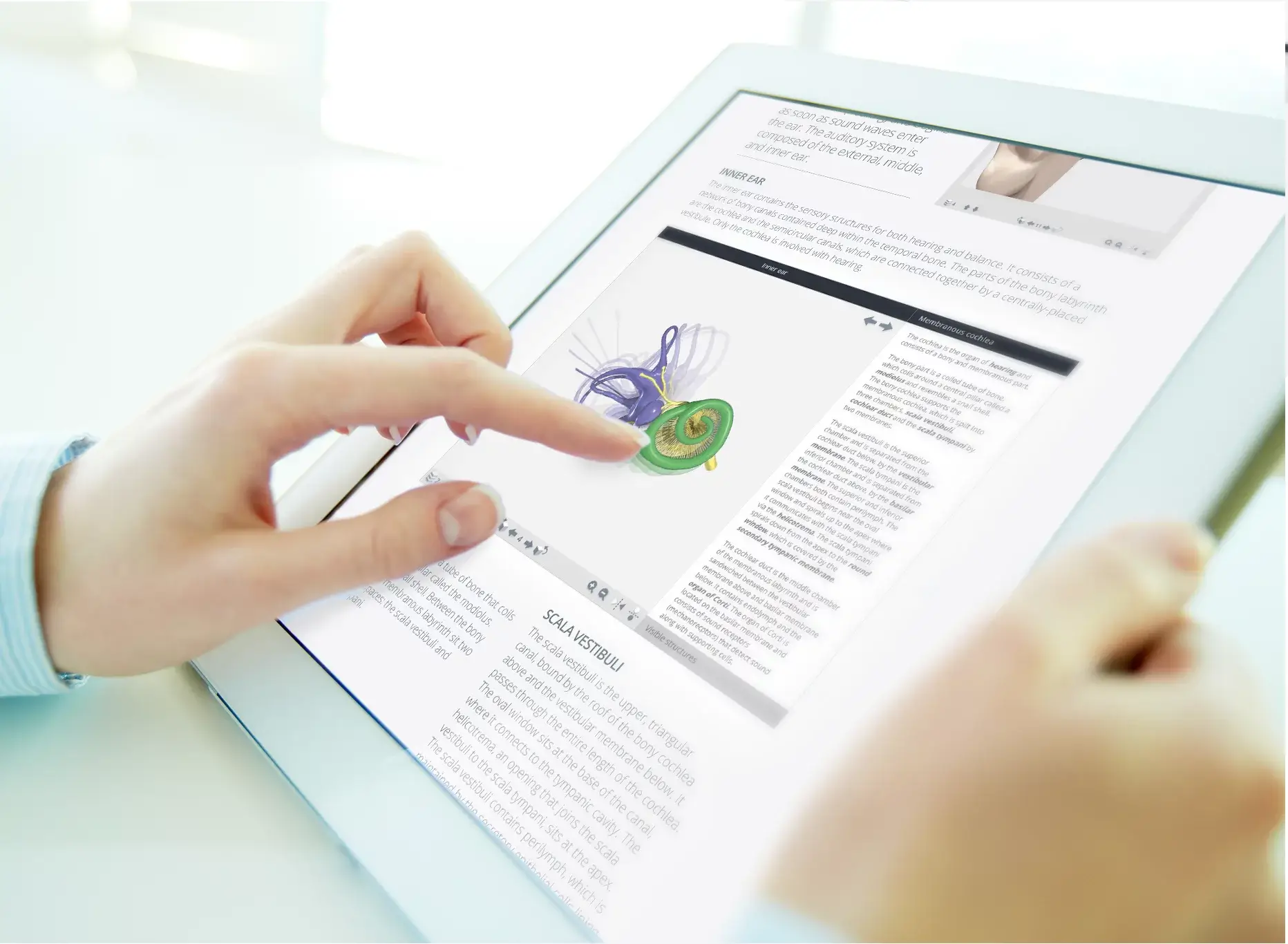Have you ever sat in an exam and thought “I wish I had studied more?” Do you zone out in lectures or find reviewing your notes a blur? Students of anatomy and physiology have so much to learn, and if you just memorize and regurgitate huge amounts of text it can seem daunting – not to mention extremely boring!
However, what if you had more control over how you studied? Help is at hand with Primal Pictures’ Anatomy.tv, as we use it to explore six learning strategies that focus on active learning and engagement. Using Primal’s products while practicing these techniques can help you retain information long after the exam is over.
Anatomy of the brain: How do we remember?
Let’s turn to the neuroscience of learning to appreciate why active learning styles can lead to improved student outcomes.
Understanding complex subjects can be difficult and usually multiple areas of the brain are stimulated each time we learn, to process and store new information. The more complex the thought process is, the greater the involvement of neurological crosstalk between different areas of the brain, where memories are deeply embedded but easily retrievable.
The cerebrum is the largest part of the brain, divided into the left and right hemispheres. Each hemisphere contains four lobes: the frontal, parietal, temporal and occipital. Among other aspects, the frontal lobe controls cognitive thought and memory, while the temporal lobe controls learning and memory retrieval.

The hippocampus is in the temporal lobe, responsible for forming new memories, and is associated with lower levels of cognitive functions such as understanding and remembering.

Now that we know which areas of the brain are stimulated through learning, let’s move on to the six learning strategies.
What are the six strategies?
The six learning strategies were developed by cognitive psychologist Y. Weinstein et al. to help students become fully engaged with their subject, so they perform better in exams. The strategies are:
-
- Dual coding – combining words with visuals
- Spaced practice – stretch out studying over time
- Retrieval practice – bring information to mind repeatedly without the aid of materials
- Concrete examples – for understanding abstract ideas
- Elaboration – explain and describe ideas with many details
- Interleaving – switch between ideas while you study
Now, let’s explore how to apply these learning strategies using Anatomy.tv.
Applying the learning strategies
Anatomy.tv is Primal Pictures’ world-leading 3D online resource for educators, students and professionals for developing human anatomy and physiology knowledge. It has a vast array of products that use detailed and medically accurate 3D models built from real human data by an in-house team of experts. Each model can be rotated, zoomed in and analyzed layer by layer. And simple search filters allow you to easily find the resources you need. All this, plus guided learning, quizzes, activities and more.
1. Dual coding – Anatomy.tv’s greatest strength lies within a dual-coding process. Depicting the same information but in a different way (e.g., combining words with visuals) allows users to retain information for longer. All Primal products have a wide range of high-quality interactive visual resources which can be viewed alongside text written and peer-reviewed by experts and our in-house anatomists.
Primal’s 3D Atlas and Real-time products are prime examples for applying this learning strategy, as alongside each anatomically accurate 3D model are detailed explanatory texts.
A more in-depth dual coding experience is supported through Primal’s AR and VR modules. By immersion, you gain vital hands-on experience by interacting with the 3D models.
2. Spaced practice – Studying in small chunks over time strengthens your memory by giving your brain room to absorb lots of information. Primal’s 3D Human Anatomy and Physiology product is perfectly aligned with this learning strategy, providing you guided learning material that you can study when you want.
Complex anatomical and physiological concepts are broken down into 20 systemic modules, each divided into manageable chapters with additional learning objectives. These include quizzes and printable coloring books which help you revisit topics, enabling you to learn at your own pace.
3. Retrieval practice – How can you study without a textbook? With Primal’s 3D Real-time product it’s easy. You can create your own 3D model, building it from scratch or dissecting structures away while explaining what you are doing. There is also an option to turn off headings and text – test yourself, then reveal the answers and see if you are right.
Lastly, if you want to quickly test yourself, then Primal’s 3D Anatomy Quiz App is the perfect way – while still having fun.
4. Concrete examples – This is a standard studying technique used by most teachers, as it is one of the most effective ways to learn. Visualizing abstract ideas using concrete examples makes them more relatable and therefore memorable.
The benefit of Anatomy.tv is that it provides incredible graphics that aid in understanding abstract ideas. Some utilization examples include:
-
- Understanding the key changes between healthy and diseased conditions through high-quality 3D images and videos in the Disease & Conditions product.
- Exploring how muscles function and move in everyday activities through 3D animations, videos and detailed models across a selection of Functional Anatomy and Physical Therapy resources.
5. Elaboration – Having to explain anatomical concepts in detail can seem daunting, but not when using Primal’s 3D Atlas. Each 3D anatomical structure comes with detailed text that links to other relevant media at appropriate points – a clinical condition, a clinical or dissection image or detailed illustration, etc. – helping you learn and understand the real-life context.
Primal’s Disease & Conditions product is perfect for the elaboration learning technique, as it boosts knowledge retention as you explore the causes, symptoms and treatments of a particular clinical condition.
6. Interleaving – Switching between concepts when you study is vital for an in-depth understanding of anatomy and physiology. Each structure or system doesn’t exist on its own, but works because of its relation to other areas of the body. The products in Anatomy.tv cover everything from gross anatomy and physiology to complex functional and clinical anatomy. From this, you can build a thorough understanding of anatomy that can be applied to real-world scenarios.
For example, if you want to learn about the stomach, Primal’s Anatomy and Physiology product breaks down the basics, showing you how the stomach’s structure functions as an important part of the digestive system. Once you’ve grasped the basics, head over to Primal’s 3D Atlas, which provides greater context, allowing you to delve deeper into the stomach’s anatomical relationship with surrounding structures. Then you can move on to the 3D Real-time product and virtually dissect the region, viewing the dissection image and 3D model side by side. This will give you a good understanding of the anatomy and physiology of the stomach, and you can expand your knowledge further by studying its clinical relevance using Primal’s Imaging and Disease & Conditions products.

In summary, to study anatomy effectively, it is essential you engage fully with the subject in a way that suits you to best prepare for exams with confidence. Applying the different strategies above in conjunction with an immersive interactive platform like Anatomy.tv will maximize your learning.
Interested in learning more about Primal’s resources? Please fill in the form here and our team will be in touch.
